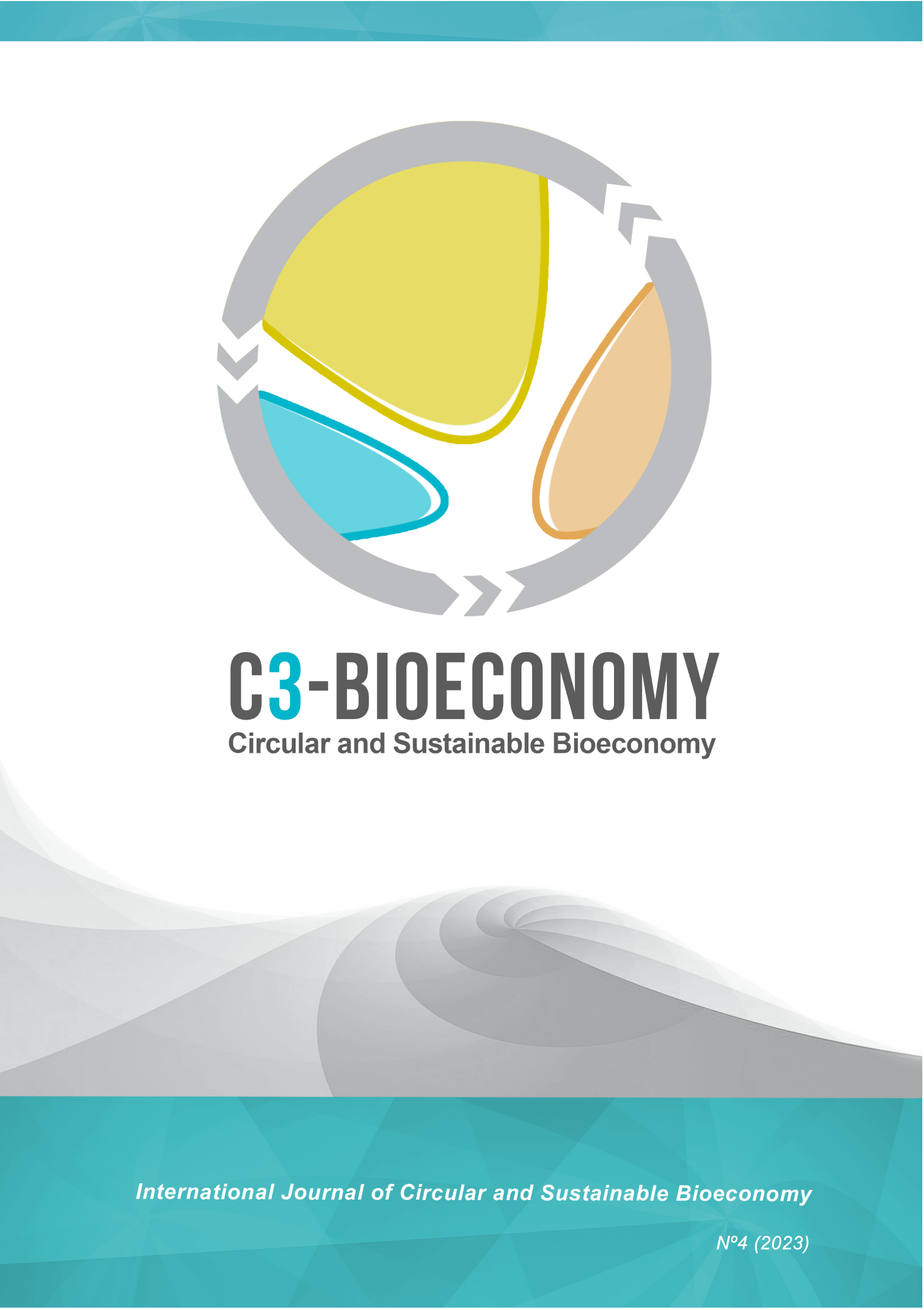Food loss and waste: One of the great challenges of the circular economy
Main Article Content
Abstract
On a planet where more than 800 million people suffer from hunger, around one third of the food produced is lost or wasted along the agri-food chain, causing unnecessary waste of water and the emission of greenhouse gases that leads to irreversible climate change.
This study presents the main difficulties that the social agents of the agri-food system face in addressing the reduction of food waste: a diffuse conceptual framework, no standardization of quantification methods, little attention to prevention and a regulatory framework that has yet to be clarified in cases such as Spain. Among the international research projects currently being implemented, the ZeroW project stands out, which develops innovative solutions against food loss and waste to be implemented transversally throughout the entire agri-food chain.
This article aims to clarify the initial situation in Spain and Andalusia to reduce food loss and waste in the European context and to highlight the need to move towards a circular and more sustainable agri-food system that promotes, through innovation, responsible production and consumption without generating waste.
Downloads
Publication Facts
Reviewer profiles N/A
Author statements
Indexed in
-
—
- Academic society
- N/A
- Publisher
- Universidad de Córdoba
Article Details

This work is licensed under a Creative Commons Attribution-NonCommercial-NoDerivatives 4.0 International License.
Proposed policy for journals offering open access. Those authors who publish in this journal accept the following terms:
a) Authors will retain their copyrights, but guarantee the journal the right to the first publication of their work, which will be simultaneously subject to the Creative Commons Recognition License , which allows third parties to share the work provided that the author and initial publication in this journal is indicated.
b) Authors may subscribe other non-exclusive license agreements for the distribution of the work published (for example: place it in an institutional electronic archive, or publish it in a topical volume) provided that the initial publication in this journal is duly noted.
Authors are allowed and even encouraged to disseminate their work via the Internet (e.g., in institutional electronic files or on their website) before and during the submission process, as this can foster valuable exchanges and increase citations of the work published. (See The effect of open access).
References
BARCO, H., ORIBE-GARCÍA, I., VARGAS-VIEDMA, M.V., BORGES, C.E., MARTÍN, C., & ALONSO-VICARIO, A. (2019). New methodology for facilitating food wastage quantification. Identifying gaps and data inconsistencies. Journal of Environmental Management, 234, 512-524. doi: https://doi.org/10.1016/j.jenvman.2018.11.037
BONFERT, B., BURKE, M., CAFFREY, A., MADERSON, S., MOLOTOKS, A., PEARCE, J., & TAK, M. (2021). A tool in the toolkit: can true cost accounting remove siloed thinking about food loss and waste? Recuperado de: www.foodsecurity.ac.uk/publications
DI DONATO, M., & CARPINTERO, O. (2021). Household Food Metabolism: Losses, Waste and Environmental Pressures of Food Consumption at the Regional Level in Spain. Foods, 10, 1166. https://doi.org/10.3390/foods10061166
EUROPEAN COMMISSION (2016). Closing the loop. New circular economy package. Recuperado de: https://www.europarl.europa.eu/RegData/etudes/BRIE/2016/573899/EPRS_BRI%282016%29573899_EN.pdf
EUROPEAN COMMISSION (2023). Food waste statistics. Recuperado de: https://food.ec.europa.eu/system/files/2023-03/fw_eu-actions_ms_20230307_pres-01.pdf
FAO. Organización de las Naciones Unidas para la Alimentación y la Agricultura. 2011. Pérdidas y desperdicio de alimentos a nivel mundial. Alcance, causas y prevención. Recuperado de: https://www.fao.org/3/i2697s/i2697s.pdf
FAO. Organización de las Naciones Unidas para la Alimentación y la Agricultura. 2013. Food waste footprint. Impact on natural resources. Recuperado de: https://www.fao.org/3/i3347e/i3347e.pdf
FAO. Organización de las Naciones Unidas para la Alimentación y la Agricultura. 2014. Food losses and waste in the context of sustainable food systems. Recuperado de: https://www.fao.org/3/i3901e/i3901e.pdf
FAO. Organización de las Naciones Unidas para la Alimentación y la Agricultura. 2015. Global initiative on food loss and waste reduction. Recuperado de: https://www.fao.org/3/i4068e/i4068e.pdf
FAO. Organización de las Naciones Unidas para la Alimentación y la Agricultura. 2019. El estado mundial de la agricultura y la alimentación. Progresos en la lucha contra la pérdida y el desperdicio de alimentos. Recuperado de: https://www.fao.org/3/ca6030es/ca6030es.pdf
FAO. Organización de las Naciones Unidas para la Alimentación y la Agricultura. 2022. El estado de la seguridad alimentaria y nutricional en el mundo. Adaptación de las políticas alimentarias y agrícolas para hacer las dietas saludables más asequibles. Recuperado de: https://www.fao.org/3/cc0639es/cc0639es.pdf
FAO. Organización de las Naciones Unidas para la Alimentación y la Agricultura. 2023. El estado de la seguridad alimentaria y nutricional en el mundo. Reorientar las políticas alimentarias y agrícolas para que las dietas saludables sean más asequibles Recuperado de: https://www.fao.org/3/cc6550es/cc6550es.pdf
FORBES, H., QUESTED, T., & O’CONNOR, C. (2021). Food Waste Index Report 2021. Recuperado de: https://wedocs.unep.org/bitstream/handle/20.500.11822/35280/FoodWaste.pdf
GASCÓN, J. (2018). Food waste: a political ecology approach. Journal of Political Ecology, 25, 587-601. doi: https://doi.org/10.2458/v25i1.23119
GASCÓN, J., & MONTAGUT, X. (Eds.) (2014). Alimentos desperdiciados. Un análisis del derroche alimentario desde la soberanía alimentaria. Barcelona; Quito: Icaria; Instituto de Altos Estudios Nacionales.
GASCÓN, J., SOLÁ, C., & LARREA, C. (2022). Inequidad en la cadena agroalimentaria y desperdicio de alimentos. El caso de la producción frutícola de Lleida. Distribución y Consumo, 172, 57-62.
KLING, W. (1943). Food waste in distribution and use. Journal of Farm Economics, 25, 849-859. doi: https://doi.org/10.2307/1231591
LI, H., & PAN, P. (2021). Food waste in developed countries and cold chain logistics. E3S Web of Conferences, 251, 03001. doi: https://doi.org/10.1051/e3sconf/202125103001
LÓPEZ-BARRERA, E., & HERTEL, T. (2021). Global food waste across the income spectrum: Implications for food prices, production and resource use. Food Policy, 98, 101874. doi: https://doi.org/10.1016/j.foodpol.2020.101874
MAPA. MINISTERIO DE AGRICULTURA, PESCA Y ALIMENTACIÓN (2019). Más alimento, menos desperdicio. Memoria anual 2019. Recuperado de: https://www.mapa.gob.es/es/alimentacion/temas/desperdicio/16memoria_anual_estrategia_desperdicio_2019_tcm30-627865.pdf
MAPA. MINISTERIO DE AGRICULTURA, PESCA Y ALIMENTACIÓN (2022). Informe del consumo alimentario en España 2022. Recuperado de: https://www.mapa.gob.es/eu/alimentacion/temas/consumo-tendencias/informe-consumo-2022-baja-res_tcm35-655390.pdf
STENMARCK, A., JENSEN, C., QUESTED, T., & MOATES, G. (2016). Estimates of European food waste levels. FP7 FUSIONS Project: Reducing food waste through social innovation. Recuperado de: https://www.eu-fusions.org/phocadownload/Publications/Estimates%20of%20European%20food%20waste%20levels.pdf
TEUBER, R., & DEJGARD-JENSEN, J. (2020). Definitions, measurement, and drivers of food loss and waste. En M.R. Kosseva & C. Webb (Eds.), Food Industry Wastes (pp. 3-18). Elsevier Inc. doi: https://doi.org/10.1016/B978-0-12-817121-9.00001-2


